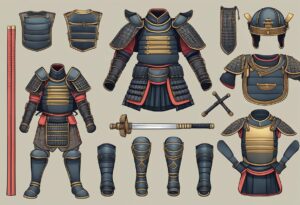In Japan, it is customary to give koden to the bereaved family at a funeral.
Koden is condolence money, and it is an important part of the Japanese funeral tradition.
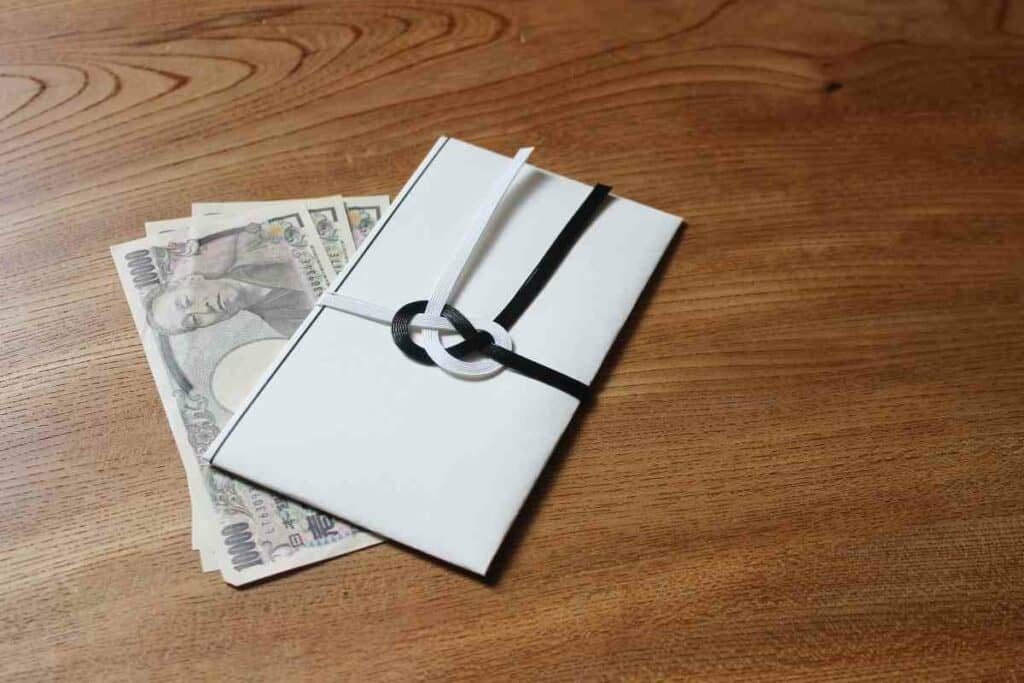
Putting your condolence gift in an envelope isn’t as simple as it seems, so keep reading to find out everything you need to know about koden envelopes!
Table of Contents
What is Koden
In Japan, koden is a condolence gift given to family or friends when they have lost a loved one.
The custom of giving koden dates back to the Edo period, when it was believed that the act of giving would help comfort the bereaved.
Common koden gifts used to be food or soap to keep the families well and healthy in times of sorrow and darkness.
Nowadays, koden is given as money as a way to support those who are grieving.
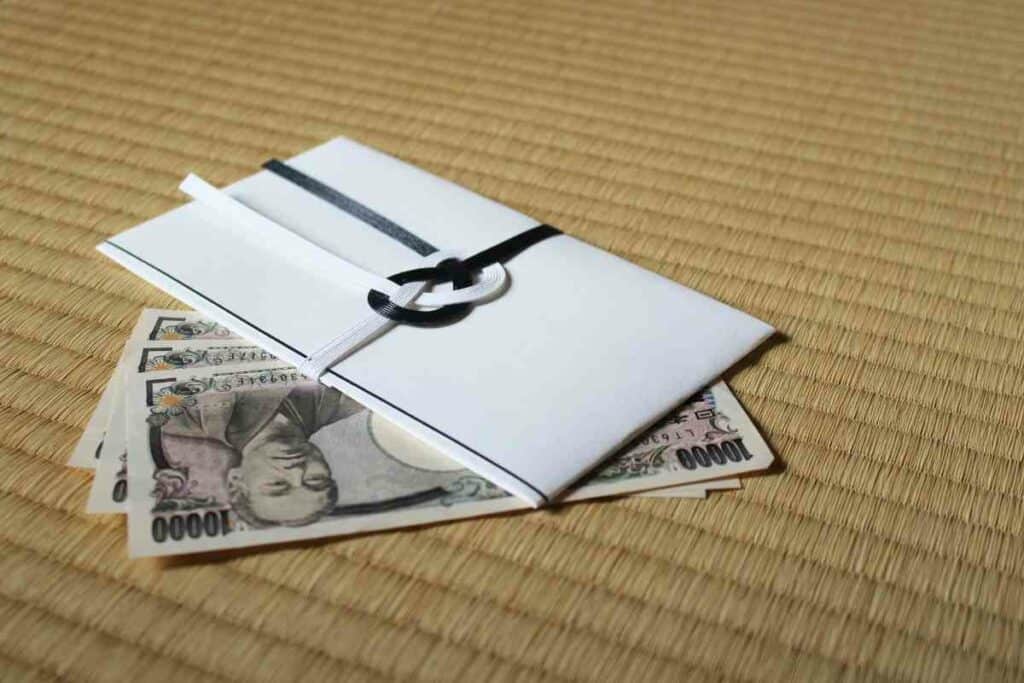
The gift goes towards the funeral costs to lighten the financial burden on the bereaved.
It is also seen as a way to show support and care for those who are grieving, as well as to express one’s condolences.
The Parts of Koden Envelope
A koden envelope is actually two envelopes, the external and the internal envelopes.
It is important to pick the right color when buying a koden envelope, but this should help and explain why.
The External Envelope
You can buy your condolence gift envelope from nearly any store in Japan.
Book stores, convenience stores, and 100 yen shops will all have cards and envelopes for any occasion.
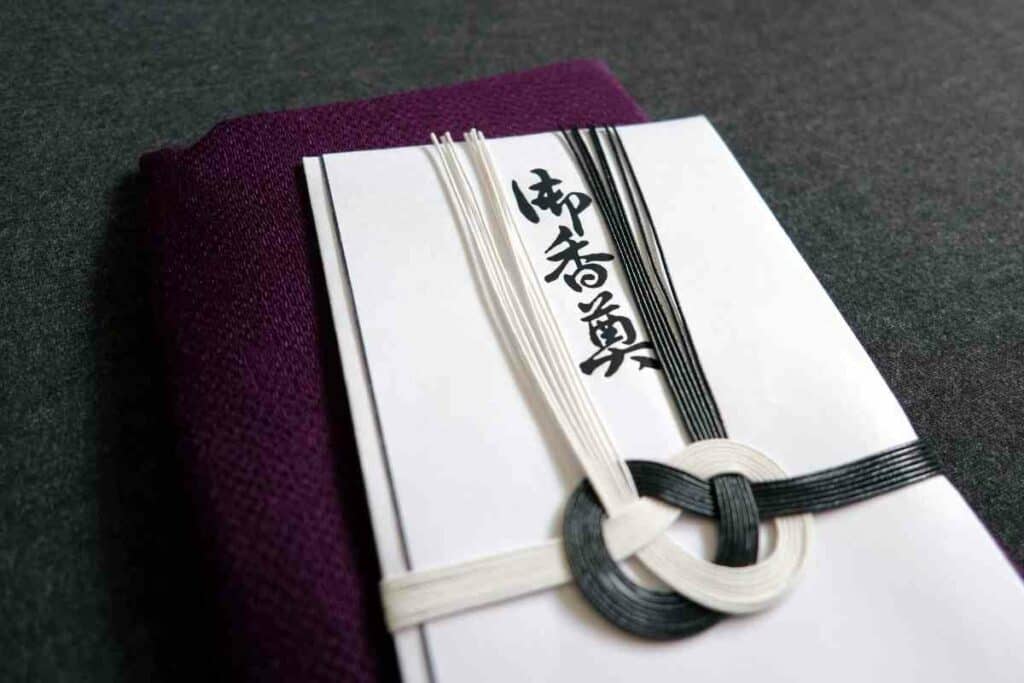
When you walk into a store looking for a koden envelope, look for one that is tied with black and white ceremonial strings called mizuhiki.
The color of the envelope matters.
The envelope should always be white with black writing. Don’t pick up a bright colored envelope “because it looks fun”. Bright colors are in general do not fit well with the somber occasion.
Never use a red and white envelope as they are used for celebrations in Japan.
Although we are moving towards calling funerals and memorials “celebrations of life”, this is not the case in Japan and it will look as though you are celebrating their death.
The Internal Envelope
The internal envelope should always be white. It will be slightly smaller than the external envelope, and will be the perfect size to hold yen.
The front of the envelope is the side without the seam, and the back of the envelope is the side with the seam.
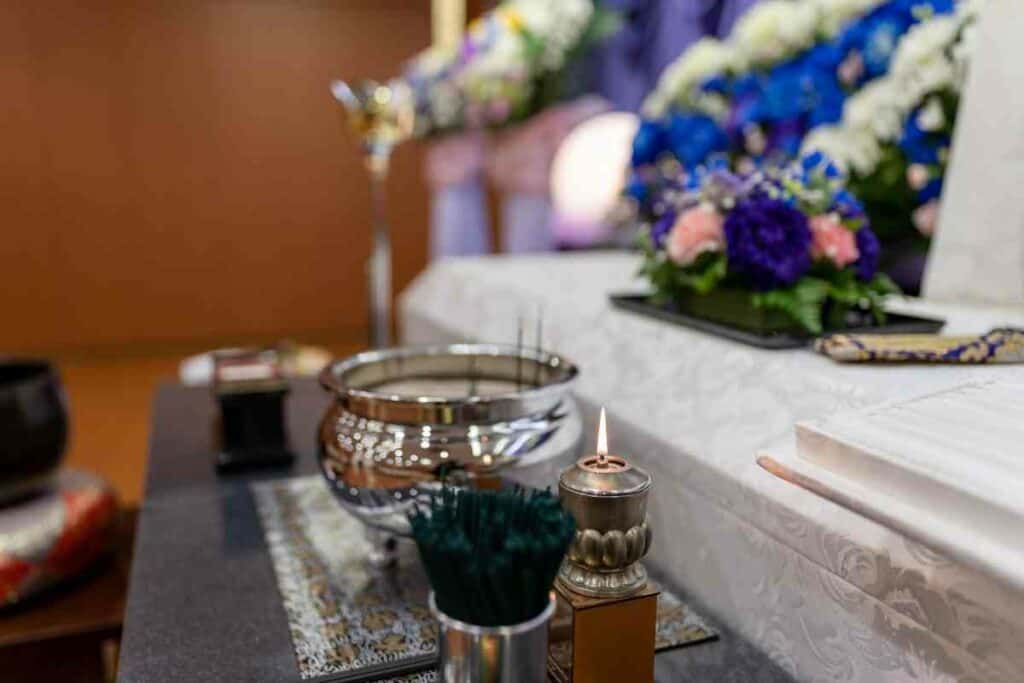
There may be lines to show you where you can write text, or it may be left blank for a cleaner appearance.
As you may have figured out, this envelope goes inside the external envelope.
How Much Should You Give?
The amount of koden depends on a lot of factors. It depends on your age, how close you were to the deceased, and your financial situation.
Not knowing how much to give can leave many people worried that they are giving too little or too much and don’t want to seem disrespectful when attending the funeral.
There are basic guidelines on how much you should give.
| Association to You | Amount |
|---|---|
| Parents | 50,000 – 100,000 |
| Siblings | 30,000 – 50,000 |
| Grandparents | 10,000 – 50,000 |
| Other Relatives | 5,000 – 10,000 |
| Friends, Colleagues, or Acquaintances | 3,000 – 5,000 |
By this table, if the deceased is your parents you would give the most yen, and friends the least amount.
Every family is different, and your relationships may not be as straightforward.
You may have a best friend that feels like a sibling, but does that mean they should only get 10% of what you would have given an actual sibling?
The chart is meant as a guide to help those who don’t know where to start when giving koden, and it doesn’t need to be followed to the letter. The amount you give is up to you.
The Bills
Before you go digging in your wallet for yen to include in your koden, stop and read this.
The state of the bills is extremely important when being gifted as koden.
The bills should be fresh with no major wear, rips, discoloration, or other damage, but the bills should also not be brand new.
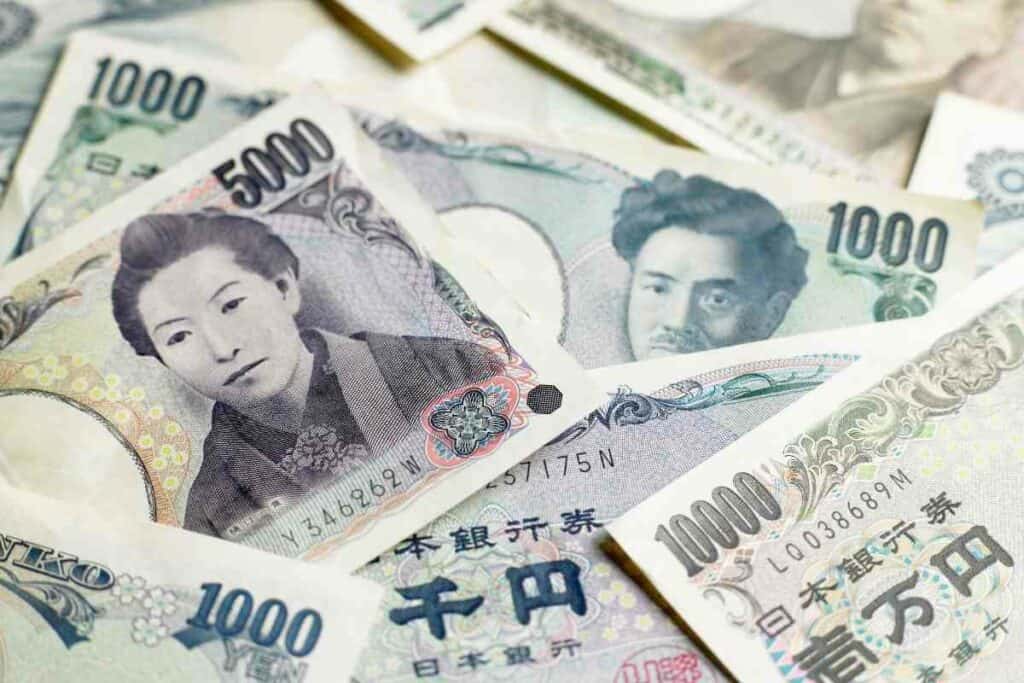
It would seem like a brand new bill would be the most respectful, since it hasn’t been passed around before, but that would be incorrect.
By using a new bill as a koden gift, you are giving that bill its first purpose. This would mean that the bill was prepared ahead of time as a condolence gift and is seen as a prediction of death.
The opposite side of this is using new bills as a congratulatory gift. By using fresh bills you are predicting success, so brand-new bills would be appropriate for this type of gift.
What to Avoid
Gifts are always appreciated, but when giving koden you should be careful to avoid any amount containing a 4 or a 9.
Since you typically gift by the thousands, this means you should avoid 4,000 yen, 40,000 yen, 9,000 yen, and 90,000 yen.
These numbers should be avoided completely because as they are spoken, they sound similar to the words for death or hardship.
Neither of those words should be brought up at a funeral while families are grieving.
What to Write on a Koden Envelope
When you have your envelope and bills ready, it is time to fill in all the information and condolences.
External Envelope
On the external envelope, above the knotted mizuhiki, you should write one of the following words:
Goreizen 御霊前: This means “to the spirit”. This should be written on a koden envelope that you are giving to the bereaved family before the funeral is completed.
Gobutsuzen 御仏前: meaning “to the Buddha”. In Buddhist beliefs, the spirit becomes a Buddha on the 49th day after death. This is why funerals will also be held on the 49th day after the passing of a loved one to perform rituals so that the departed can be reborn that day. If you are giving your condolence gift, it should be addressed “to the Buddha” and not “to the spirit.”
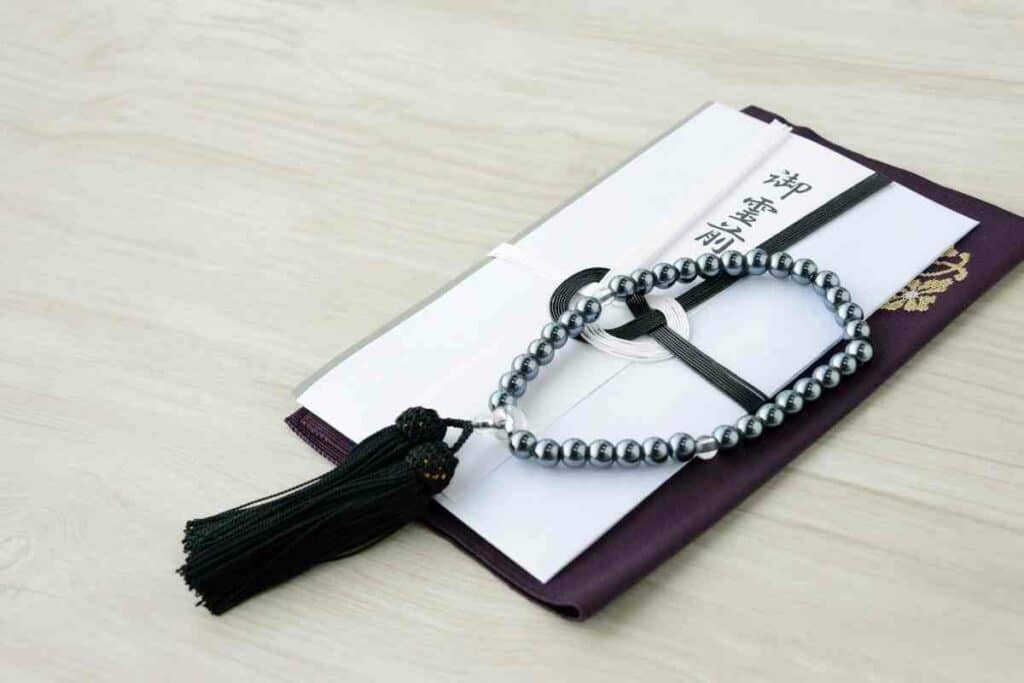
Underneath your condolence message, you should write your name in vertically katakana.
If you don’t know how to write your name in katakana, use this converter.
If you have a unique spelling of your name, try using the traditional spelling, or spell your name phonetically to get the proper name. Try this.
Internal Envelope
Now onto the inner envelope.
Do you remember which side was the front and which was the back of the koden envelope? That’s going to be important here.
On the front of the envelope, you are going to write the amount of condolence money you are gifting.
Learning numbers in a different format than what you are used to can be tricky. Use this table to find the kanji you need to write out your amount.
Once you find your amount, it should be sandwiched in between the kanji for money (金) and yen (円).
- 金 = money
- 参 = the amount
- 萬
- 円 = the currency
| Amount | Kanji |
|---|---|
| 3,000 yen | 参阡 |
| 5,000 yen | 伍阡 |
| 10,000 yen | 壱萬 |
| 15,000 yen | 壱萬伍阡 |
| 20,000 yen | 弐萬 |
| 30,000 yen | 参萬 |
| 50,000 yen | 伍萬 |
| 100,000 yen | 拾萬 |
| 300,000 yen | 参拾萬 |
If your koden amount isn’t listed here, try using the conversion tool found here.
Once you have entered in the number you wish to convert, hit “convert to kanji numbers” and use the daiji option.
On the back of the envelope, on the lower left hand side you should write your mailing address and your full name.
Why Do They Need My Address?
All of the information you have written on the card helps the grieving family send you a return gift.
A thank you for the condolence gift.
The gift they send is usually 10% to 50% of the value of what you gave but is given as something consumable.
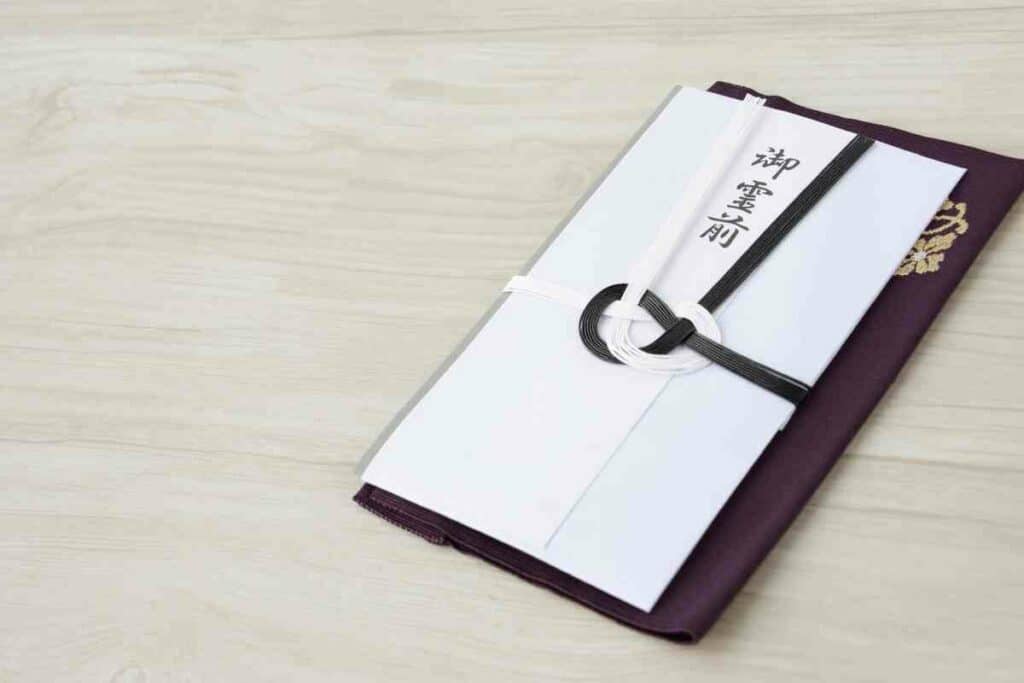
Usually, the gift of food or soap is given as a return gift for you giving a condolence gift.
The name and address help the family know exactly who gave the gift, and where they can send their thank you.
What Color Ink
Even the color of the ink you use to write on the envelopes matters, and not all shades of black are the same.
When writing on the koden envelopes, you should use light black ink.
The idea is that the ink has been watered down by tears and it shows the family you are grieving the loss as well.
Final Thoughts
Koden is an important custom in Japan, and it can be difficult to understand if you’re not familiar with the culture.
By taking the time to learn about koden, you’ll be able to show your respects appropriately and avoid any cultural faux pas.
- 12 Things Tourists Should NEVER Say in Japan
- Kissing Robot: Exploring the Popularity of the Chinese Kissing App
- Unlocking the Secret Dating Rituals Only Locals Know in Japan
- Samurai Armor: Ancient Protection for Japan’s Elite Warriors
- 10 Amazing Facts About Schools in Japan: Unique Traditions and Educational Practices
- Where can you see snow monkeys in Japan: Best locations and viewing tips




